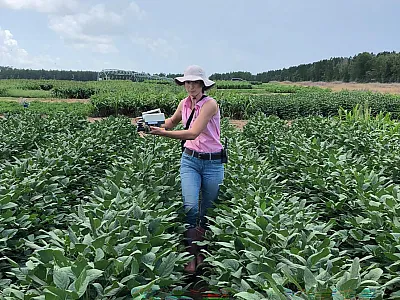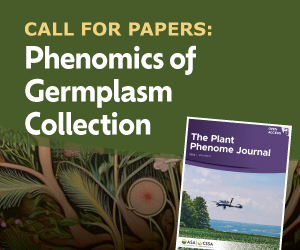Rooted in resilience: regenerative agriculture and the future of food systems
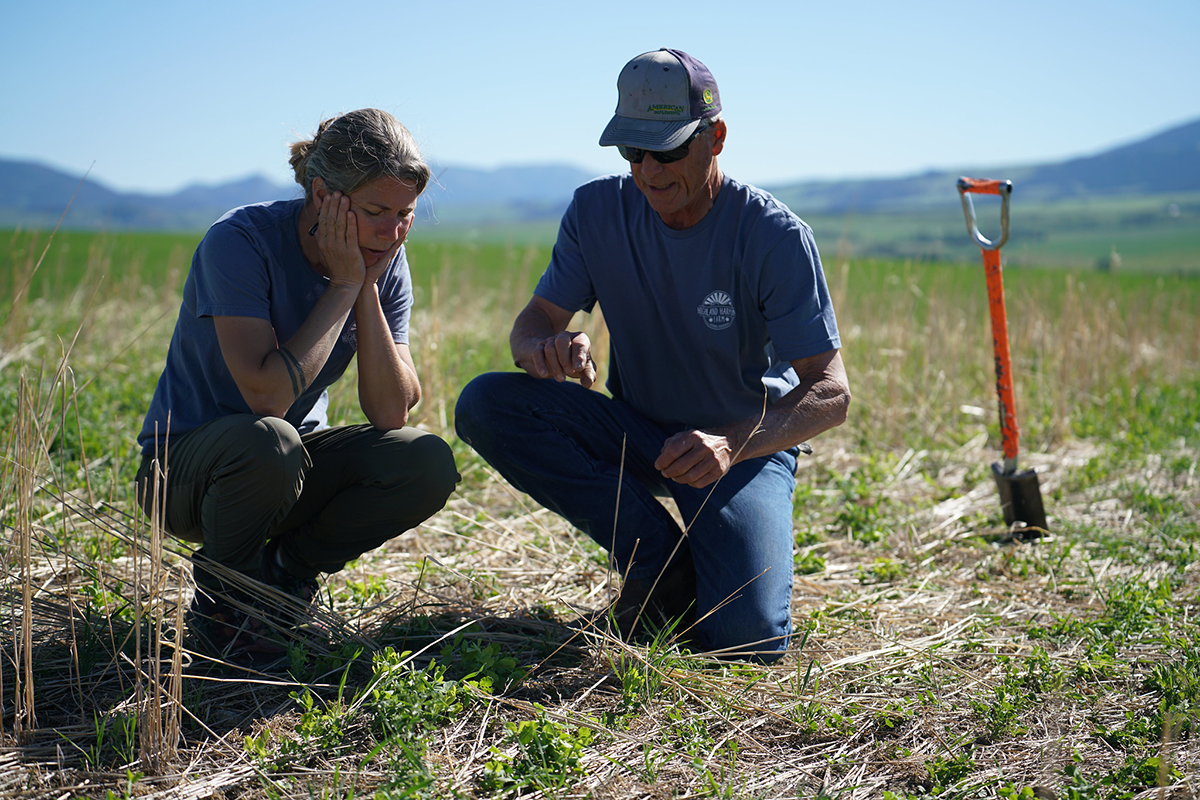
Regenerative agriculture (RA) is an ecological approach to farming that goes beyond sustainability by actively restoring soil health, biodiversity, and ecosystem services while improving resilience to climate change. Instead of relying on a fixed set of techniques, RA emphasizes adaptable practices such as no-till farming, cover cropping, diversified rotations, perennial crops, organic inputs, and livestock integration to rebuild soil organic carbon and enhance system stability. For researchers, practitioners, and policymakers alike, RA opens a space where agronomic science, ecological insight, and farmer experience can co-create pathways toward a more resilient, equitable, and climate-positive food system.
As agriculture faces the pressure to feed a growing population among climate uncertainty, soil degradation, and biodiversity loss, regenerative agriculture (RA) has emerged both as a scientific paradigm and a practical pathway toward resilient food systems. Rooted in ecological processes, RA reframes the goals of agriculture, offering not just sustainability, but regeneration of agroecosystems.
Proposed by Robert Rodale in the early 1980s, regenerative agriculture was envisioned as a holistic farming philosophy that increased biological and economic stability while moving away from synthetic chemicals and non-renewable resources (Giller et al., 2021). In the decades since, RA has evolved into a system-based approach that leverages diverse and context-specific practices to rebuild soil health, enhance biodiversity, and mitigate climate change.
Although there is no universally accepted definition, most frameworks converge outcome-based goals: increasing ecological resilience, recovering biodiversity, enhancing ecosystem services such as carbon sequestration, and sustaining productivity over time (Beacham et al., 2023; Schreefel et al., 2020).
Soil as the foundation of regeneration
Modern industrial agriculture has left soils depleted, compacted, and less biologically diverse. Globally, agriculture is the leading driver of soil degradation, primarily through mechanized tillage, erosion, agrochemical overuse, and the decoupling of crop and livestock systems (Olsson et al., 2019). These impacts extend beyond the farm, contributing to climate change, biodiversity loss, and impaired water cycles.
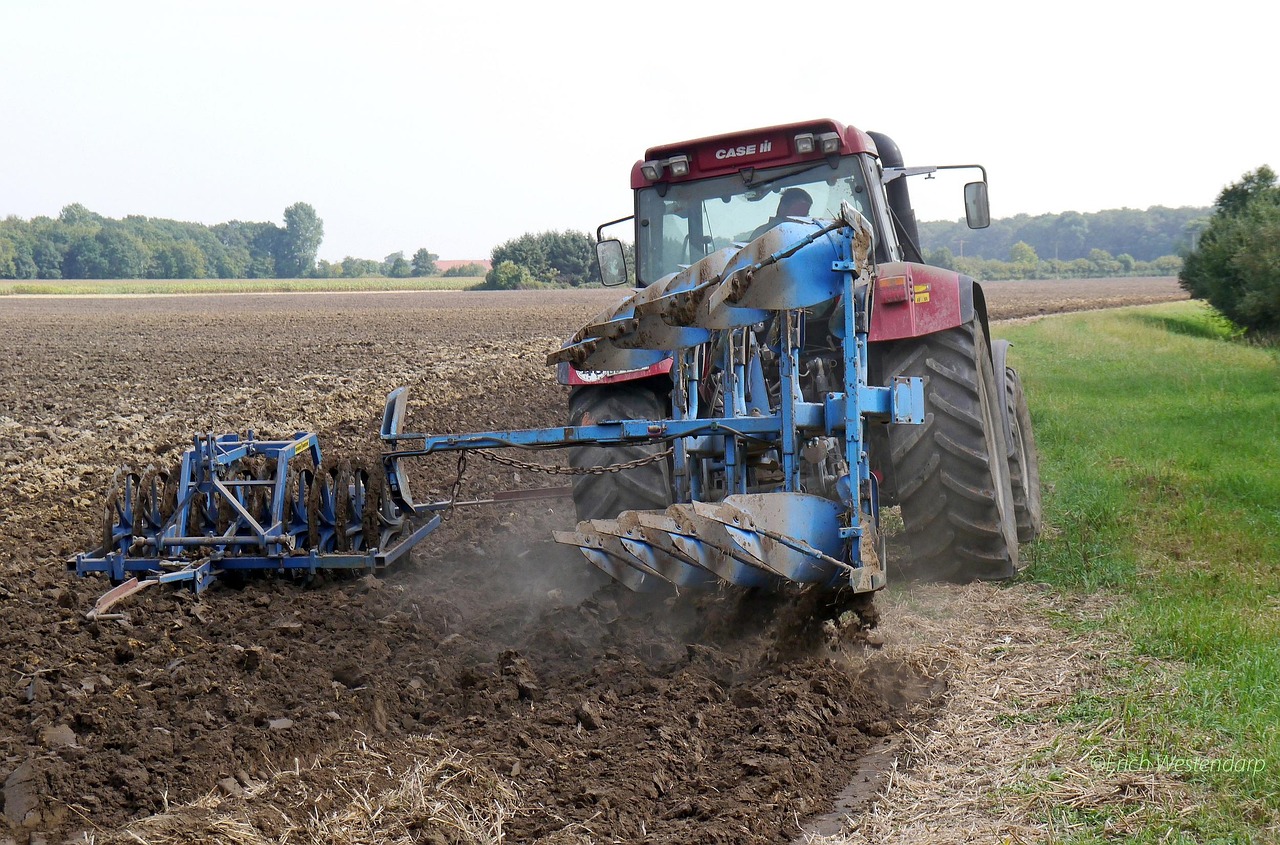
Regenerative agriculture directly addresses this degradation by considering soil as a living system that is the foundation of healthy agroecosystems. Healthy soils store nutrients, cycle water, support root growth, and provide habitat for an immense diversity of organisms. The cornerstone of these functions supplied by healthy soils is soil organic carbon (SOC), the largest terrestrial carbon reservoir (Chen et al., 2022). Soil organic carbon includes both short-lived, easily decomposed forms and long-lasting, stable ones. While some practices lead to temporary carbon storage, regenerative agriculture focuses on carbon sequestration, stabilizing carbon in the soil, so it's resistant to decomposition and climate effects (FAO & ITPS, 2020).
Most importantly, soils can be either a sink or source of carbon depending on management. Hence, RA lies in adopting practices that not only increase carbon inputs (e.g., root exudates, plant residues, and organic residues), but also enhance stabilization mechanisms like aggregation, deep-root deposition, and microbial processing (Pierret et al., 2016; Dietzel et al., 2017).
Regenerative practices that work
As previously noted, RA does not rely on a fixed set of practices. Rather, it applies core principles that are adapted to specific ecological conditions, soil type, climate, and socio-economic contexts. Nevertheless, several key practices are consistently associated with successful regeneration:
No-till and reduced disturbance
Reducing soil disturbance through no-till or conservation tillage protects soil structure, prevents erosion, and promotes carbon stabilization. No-till systems tend to show improved soil aggregation, microbial activity, and nitrogen retention, particularly when combined with residue retention and cover cropping (Blanco-Canqui & Ruis, 2018; Ogle et al., 2012).
Cover cropping
Cover crops are among the most widely adopted regenerative tools. These plants protect bare soil, suppress weeds, and increase biomass input. They also reduce nutrient leaching and improve infiltration. Grasses tend to enhance soil structure while legumes contribute nitrogen through fixation. The combinations of species, planting timing, and termination methods can influence SOC outcomes (Lal, 2015; Ruis & Blanco-Canqui, 2017; Jian et al., 2020).
Diversified rotations
Crop rotations increase temporal biodiversity, disrupting pest and disease cycles while supporting different root and residue inputs. Including perennials and legumes can significantly increase SOC and resilience to extreme weather events (King & Blesh, 2018; Zhang et al., 2021; Gaudin et al., 2013). Rotational diversity fosters distinct soil microbial communities, generating legacy effects that enhance biogeochemical cycling, particularly on carbon and nitrogen (Tiemann et al., 2015; Faucon et al., 2021).
Deep-rooted and perennial crops
Plants with extensive root systems drive carbon deeper into the soil where it is less likely to oxidize. Fine root turnover, rhizodeposition, and exudates stimulate microbial communities in lower horizons, leading to long-term carbon stabilization (Romero-Ruiz et al., 2023). Deep roots also improve water uptake and soil porosity, increasing drought resilience.
Organic inputs and residue recycling
Incorporating compost, manure, and crop residues reintroduces labile carbon and nutrients. These inputs not only feed microbes, but also build SOC over time. Proper residue management (e.g., no burning, delayed incorporation) is key to sustain SOC formation and microbial diversity (Collins et al., 1992; Menefee et al., 2023).
Integrating livestock for synergy
Livestock are often seen as either saviors or villains in climate discussions. In RA, their role is nuanced but potentially powerful. Properly managed, livestock can accelerate nutrient cycling, enhance soil health, and increase system productivity.
Crop–livestock integration
Integrated crop-livestock systems involve growing crops and raising animals in a mutually beneficial manner, either on the same land or through coordinated exchanges between farms. This synergy reduces dependency on external inputs and recycles nutrients efficiently (Russelle et al., 2007; Sulc & Tracy, 2007).
Integrated crop-livestock systems have been shown to match or exceed yields of specialized monocultures while improving soil structure, microbial biomass, and organic matter (Peterson et al., 2020). While integration adds management complexity, it also adds resilience, buffering farms against price volatility and climatic stress.
Managed grazing
Rotational and adaptive grazing mimic natural herbivore patterns, enhancing soil structure, reducing compaction, and boosting root biomass. Hoof action promotes shallow incorporation of residues, and manure introduces labile nitrogen and carbon (Teague & Kreuter, 2020; Fenster et al., 2021).
Soil compaction is often a concern, but studies show its effects are context dependent. In sandy or dry soils, compaction is minimal and often reversible (Bell et al., 2011). Grazing can even stimulate belowground biomass, enhancing productivity (López-Mársico et al., 2015; Hamilton & Frank, 2001).
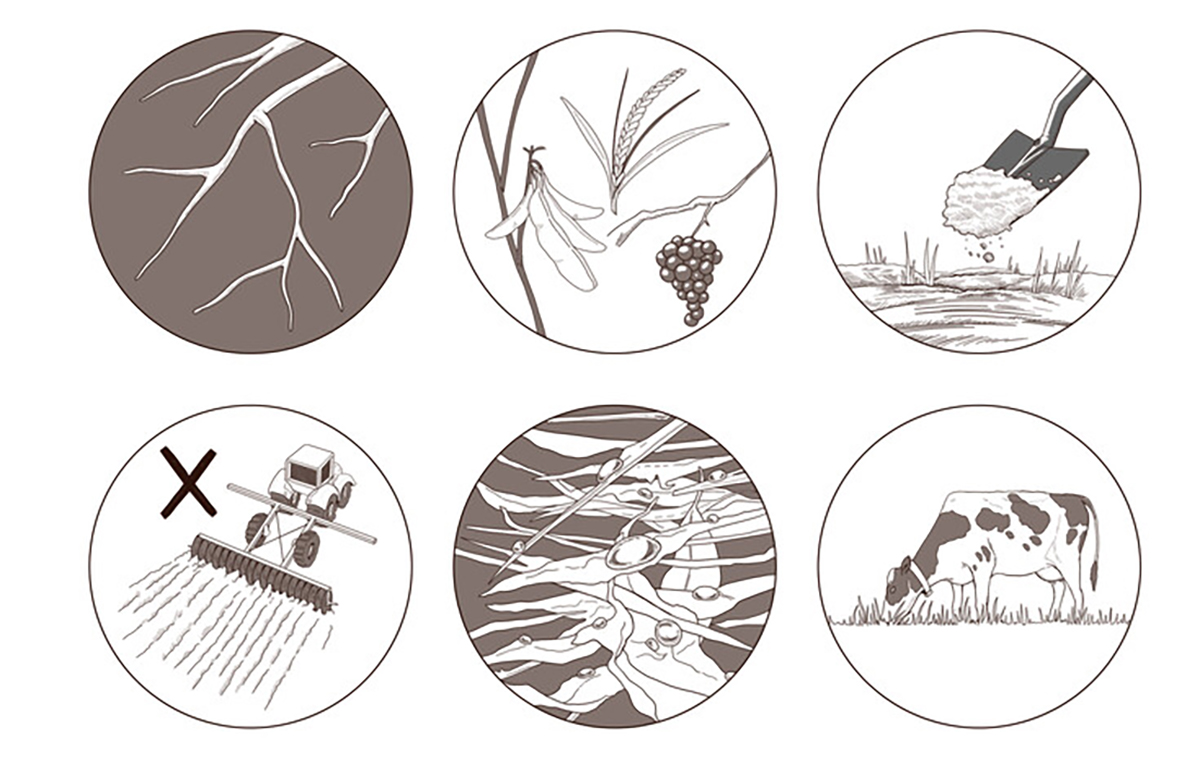
Regenerative agriculture and climate solutions
Regenerative agriculture plays a dual role in the climate equation: adaptation and mitigation. Improved water retention, reduced erosion, and biological nutrient cycling enhance farm resilience to heatwaves, droughts, and floods. Meanwhile, increased SOC and reduced input reliance lower greenhouse gas emissions.
While short-term yield reductions may occur during transition, long-term productivity often improves as soil function recovers (Sher et al., 2024). Importantly, regenerative farms frequently report higher profitability due to reduced input costs and enhanced resource efficiency (USDA-ARS, 2023).
Regenerative agriculture in practice: case studies in regeneration
Fazenda Roncador (Brazil)
In Mato Grosso, Brazil, the 152,000-ha Fazenda Roncador (Figure 1) serves as a model for regenerative intensification. Half the land is conserved forest; the remainder supports soybean, corn, and beef production in a rotational, integrated system. Nitrogen from legumes sustains pastures while residues enrich soil and prevent erosion.
With biological pest control and reduced chemical input, Roncador has increased food production 41-fold over a decade, without expanding cropland. The system demonstrates that regeneration can scale, remain profitable, and meet environmental benchmarks well beyond international standards.
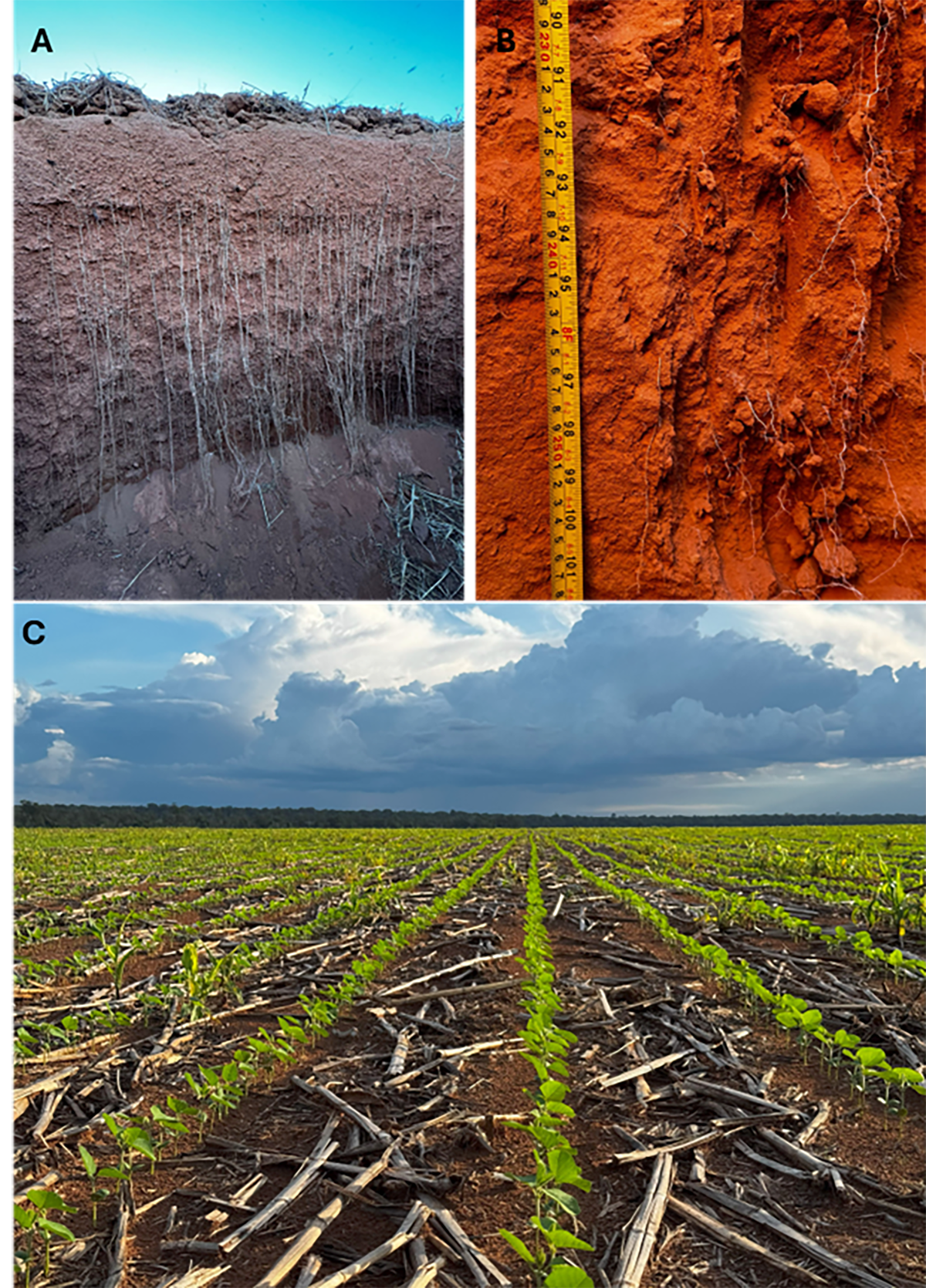
Kansas State University Innovation Farm (USA)
In the U.S. Midwest, Kansas State’s RA Innovation Farm (Figure 2) is a living laboratory exploring regenerative principles in action. Researchers test diversified rotations, livestock integration, and in situ sensors to evaluate soil moisture, carbon fluxes, and nutrient cycling.
More than research, the farm serves as an experiential platform for students and stakeholders. The goal is not just data generation, but building a bridge between science, practice, and adoption, providing real-world insight into what works, for whom, and under what conditions.
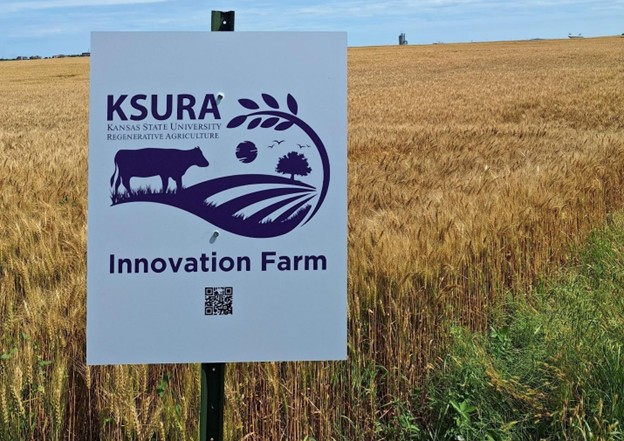
Markets, consumers, and the business case for RA
Once a grassroots movement, RA is increasingly integrated into mainstream agricultural markets. In 2022, the global RA market was valued at more than $8.5 billion with projections exceeding $18 billion by 2032 (NielsenIQ, 2022). Consumer interest in soil-friendly, climate-smart foods is growing.
Major agribusinesses are responding. McCain Foods is committed to sourcing 100% of its potatoes from regenerative systems by 2030. Syngenta and Bayer are developing tools and programs focused on soil health and input reduction (Bayer, 2022; Syngenta, 2023).
These market signals matter. They help align private-sector investments with good outcomes. Meanwhile, payments for ecosystem services, cost-share programs, and soil health policies offer essential incentives for producers transitioning to regenerative systems.
Conclusion: reimagining the role of agriculture
Regenerative agriculture is not a one-size-fits-all solution, but it is a powerful tool for rethinking how we grow food. From microbial life belowground to wildlife in restored landscapes, from yield resilience to market transformation, RA offers a compelling, evidence-based model for a thriving agricultural future.
For researchers, practitioners, and policymakers alike, RA opens a space where agronomic science, ecological insight, and farmer experience can co-create pathways toward a more resilient, equitable, and climate-positive food system.
Regeneration is not about returning to the past; it’s about building the future from the ground up.
Bayer. (2022). Soil health—stronger soil equals a healthier ecosystem. https://www.bayer.com/en/agriculture/soil-health
Beacham, J. D., Jackson, P., Jaworski, C. C., Krzywoszynska, A., & Dicks, L. V. (2023). Contextualising farmer perspectives on regenerative agriculture: A post-productivist future? Journal of Rural Studies, 102, 103100. https://doi.org/10.1016/j.jrurstud.2023.103100
Bell, L. W., Kirkegaard, J. A., Swan, A., Hunt, J. R., Huth, N. I., & Fettell, N. A. (2011). Impacts of soil damage by grazing livestock on crop productivity. Soil and Tillage Research, 113(1), 19–29. https://doi.org/10.1016/j.still.2011.02.003
Blanco-Canqui, H., & Ruis, S. J. (2018). No-tillage and soil physical environment. Geoderma, 326, 164–200.
Chen, W., Meng, H., Song, H., & Zheng, H. (2022). Progress in dust modelling, global dust budgets, and soil organic carbon dynamics. Land, 11, 176. https://doi.org/10.3390/land11020176
Collins, H. P., Rasmussen, P. E., & Douglas, C. L. (1992). Crop rotation and residue management effects on soil carbon and microbial dynamics. Soil Science Society of America Journal, 56(3), 783–788. https://doi.org/10.2136/sssaj1992.03615995005600030018x
Dietzel, R., Liebman, M., & Archontoulis, S. (2017). A deeper look at the relationship between root carbon pools and the vertical distribution of the soil carbon pool. SOIL, 3(3), 139–152. https://doi.org/10.5194/soil-3-139-2017
FAO & ITPS. (2020). Global soil organic carbon map V1.5: Technical report. Food and Agriculture Organization of the United Nations.
Faucon, M.-P., Houben, A., Dufey, A., Dardenne, C., & Lambers, S. (2021). Legacy effects of temporary grassland in annual crop rotation on soil ecosystem services. Science of the Total Environment, 773, 146140. https://doi.org/10.1016/j.scitotenv.2021.146140
Fenster, T. L., LaCanne, C. E., Pecenka, J. R., Schmid, R. B., Bredeson, M. M., Busenitz, K. M., ... & Lundgren, J. G. (2021). Defining and validating regenerative farm systems using a composite of ranked agricultural practices. F1000Research, 10, 115.
Gaudin, A. C. M., Westra, S., Loucks, C. E., Janovicek, K., Martin, R. C., et al. (2013). Improving resilience of northern field crop systems using inter-seeded red clover. Agronomy, 3(1), 148–180. https://doi.org/10.3390/agronomy3010148
Giller, K. E., Hijbeek, R., Andersson, J. A., & Sumberg, J. (2021). Regenerative agriculture: An agronomic perspective. Outlook on Agriculture, 50(1), 13–25. https://doi.org/10.1177/0030727021998063
Hamilton, E. W., III, & Frank, D. A. (2001). Can plants stimulate soil microbes and their own nutrient supply? Evidence from a grazing tolerant grass. Ecology, 82(9), 2397–2402. https://doi.org/10.1890/0012-9658(2001)082[2397:CPSSMA]2.0.CO;2
Jian, J., Du, X., Reiter, M. S., & Stewart, R. D. (2020). A meta-analysis of global cropland soil carbon changes due to cover cropping. Soil Biology and Biochemistry, 143, 107735. https://doi.org/10.1016/j.soilbio.2020.107735
King, A. E., & Blesh, J. (2018). Crop rotations for increased soil carbon: Perenniality as a guiding principle. Ecological Applications, 28(1), 249–261. https://doi.org/10.1002/eap.1648
Lal, R. (2015). Soil carbon sequestration and aggregation by cover cropping. Journal of Soil and Water Conservation, 70(6), 329–339. https://doi.org/10.2489/jswc.70.6.329
López-Mársico, L., Altesor, A., Oyarzabal, M., Baldassini, P., & Paruelo, J. M. (2015). Grazing increases below-ground biomass and net primary production in a temperate grassland. Plant and Soil, 392, 155–162.
Menefee, D. S., Collins, H., Smith, D., Haney, R. L., Fay, P., et al. (2023). Cropping management in a livestock–pasture–crop integration modifies microbial communities, activity, and soil health score. Journal of Environmental Quality, 52(3), 434–447. https://doi.org/10.1002/jeq2.20315
NielsenIQ. (2022). What is regenerative agriculture and what does it mean for CPG?https://nielseniq.com/global/en/insights/education/2022/what-is-regenerative-agriculture-and-what-does-it-mean-for-cpg/
Ogle, S. M., Swan, A., & Paustian, K. (2012). No-till management impacts on crop productivity, carbon input and soil carbon sequestration. Agriculture, Ecosystems & Environment, 149, 37–49. https://doi.org/10.1016/j.agee.2011.12.010
Olsson, L., Barbosa, S., Bhadwal, A., Cowie, K., Delusca, D., Flores-Renteria, K., et al. (2019). Land degradation. In Climate change and land: An IPCC special report on climate change, desertification, land degradation, sustainable land management, food security, and greenhouse gas fluxes in terrestrial ecosystems.
Peterson, C. A., Deiss, L., & Gaudin, A. C. M. (2020). Commercial integrated crop-livestock systems achieve comparable crop yields to specialized production systems: A meta-analysis. PLoS ONE, 15(5), e0231840. https://doi.org/10.1371/journal.pone.0231840
Pierret, A., Maeght, J.-L., Clément, C., Montoroi, J.-P., Hartmann, C., et al. (2016). Understanding deep roots and their functions in ecosystems: An advocacy for more unconventional research. Annals of Botany, 118(4), 621–635. https://doi.org/10.1093/aob/mcw130
Romero-Ruiz, A., Rivero, M. J., Milne, A., Morgan, S., Meo Filho, P., et al. (2023). Grazing livestock move by Lévy walks: Implications for soil health and environment. Journal of Environmental Management, 345, 118835. https://doi.org/10.1016/j.jenvman.2023.118835
Ruis, S. J., & Blanco-Canqui, H. (2017). Cover crops could offset crop residue removal effects on soil carbon and other properties: A review. Agronomy Journal, 109(5), 1785–1805. https://doi.org/10.2134/agronj2016.12.0735
Russelle, M. P., Entz, M. H., & Franzluebbers, A. J. (2007). Reconsidering integrated crop–livestock systems in North America. Agronomy Journal, 99(2), 325–334. https://doi.org/10.2134/agronj2006.0139
Schreefel, L., Schulte, R. P. O., de Boer, I. J. M., Schrijver, A. P., & van Zanten, H. H. E. (2020). Regenerative agriculture—The soil is the base. Global Food Security, 26, 100404. https://doi.org/10.1016/j.gfs.2020.100404
Sher, A., Li, H., & Zhang, J. (2024). Importance of regenerative agriculture: Climate, soil health, biodiversity and its socioecological impact. Discover Sustainability, 5(1). https://doi.org/10.1007/s43621-024-00662-z
Sulc, R. M., & Tracy, B. F. (2007). Integrated crop–livestock systems in the U.S. Corn Belt. Agronomy Journal, 99(2), 335–345. https://doi.org/10.2134/agronj2006.0086
Syngenta Group. (2023). Measuring soil health with an eye to the future. https://www.syngentagroup.com/sustainability/stories/measuring-soil-health-eye-future
Teague, R., & Kreuter, U. (2020). Managing grazing to restore soil health, ecosystem function, and ecosystem services. Frontiers in Sustainable Food Systems, 4, 534187. https://doi.org/10.3389/fsufs.2020.534187
Tiemann, L. K., Grandy, A. S., Atkinson, E. E., Marin‐Spiotta, E., & McDaniel, M. D. (2015). Crop rotational diversity enhances belowground communities and functions in an agroecosystem. Ecology Letters, 18(8), 761–771. https://doi.org/10.1111/ele.12453
USDA-ARS. (2023). The economics of regenerative agriculture. https://www.ars.usda.gov/oc/utm/the-economics-of-regenerative-agriculture/
Zhang, H., Tian, Y., Zhang, J., & Bi, R. (2021). Predicting soil organic carbon content in croplands using crop rotation and Fourier transform decomposed variables. Catena, 196, 104921. https://doi.org/10.1016/j.catena.2020.104921
Graduate Student Committee: Connect with us!
This article is a contribution of the ASA, CSSA, and SSSA Graduate Student Committee. If you would like to provide feedback to this committee on its work or want to volunteer with the committee to help plan any of its activities or write articles like this one, please reach out to Jessica Bezerra de Oliveira, the 2025 Chair of the committee!
If you would like to stay up to date with our committee, learn more about our work, contribute to one of our CSA News articles or suggest activities you would like us to promote, watch your emails, connect with us on X or visit: agronomy.org/membership/committees/view/ACS238/members, crops.org/membership/committees/view/ACS238/members, or soils.org/membership/committees/view/ACS238/members.
Text © . The authors. CC BY-NC-ND 4.0. Except where otherwise noted, images are subject to copyright. Any reuse without express permission from the copyright owner is prohibited.







